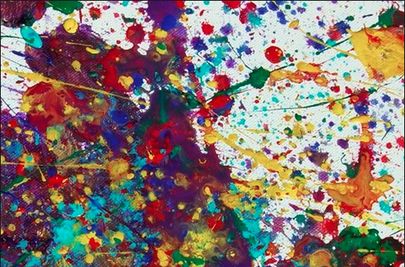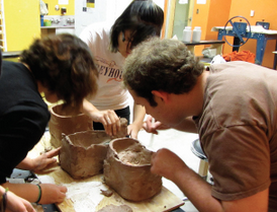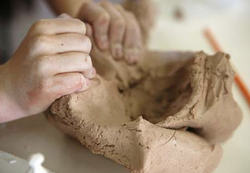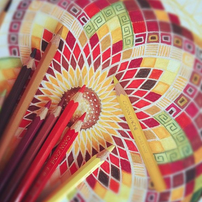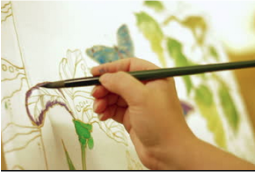Art and ADHD
"ADHD, or attention-deficit hyperactivity disorder, is a behavioural condition that makes focusing on everyday requests and routines challenging. People with ADHD typically have trouble getting organized, staying focused, making realistic plans and thinking before acting. They may be fidgety, noisy and unable to adapt to changing situations." -American Psychiatric Association http://www.apa.org/topics/adhd/
How Does Art Help?
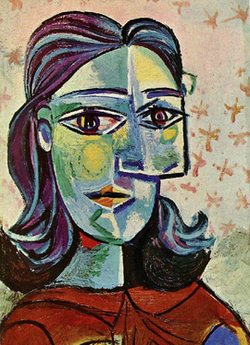
Studies have shown that the lack of mental inhibition associated with people diagnosed ADHD are common with people who possess high levels of creativity. With appropriate structure and guidance, art can be an excellent avenue for building focus, confidence, communication skills and more. On this page you'll find activities, apps and other resources.
Pablo Picasso is rumoured to have had ADHD (though there's no evidence to prove it).
Here are some benefits of making art that have been backed by studies:
|
"The ability to control your attention is most certainly a
valuable asset; difficulty inhibiting your inner mind can get in the way of paying attention to a boring classroom lecture or concentrating on a challenging problem. But the ability to keep your inner stream of fantasies, imagination, and daydreams on call can be immensely conducive to creativity. By automatically treating ADHD characteristics as a disability-- as we so often do in an educational context-- we are unnecessarily letting too many competent and creative kids fall through the cracks." - Scott Barry Kaufman http://blogs.scientificamerican.com/beautiful-minds/the-creative-gifts-of-adhd/ |
|
Art Teaching Tips for Students with ADHD:
- Let the student follow their interests: a student with ADHD is far more likely to complete a project if its something they are interested in or passionate about. Find ways to integrate their particular interests into an assignment, or find assignments/mediums that the student enjoys. If someone is excited about a certain Canadien hockey team for instance, they can create work that relates to this. Similarly, a student who is passionate about technology and loves computers can be encouraged to explore video, photography, or create digital art work
- Limit the choice of materials: too many options can easily lead to over-stimulation. To begin with, it's best to have a small amount of materials pre-chosen and ready to use. As students gain skills in focussing and planning, and familiarity with different materials, more choices can slowly be added.
- Be specific: make project directions and expectations as explicit and simple as possible. Have a printed copy of the instructions that students can keep beside them as they work.
- Start with short projects and work towards longer ones: there are plenty of art assignments that can be completed in a very short time. Based on the level of ADHD, start with a manageable amount of time and gradually increase the length of projects.
- Be willing to break some of the rules some of the time: when a student with ADHD suddenly has a particular idea or wants to take a project in a different direction, if it's feasible, let them! Art is about imagination and play. Part of building confidence comes with taking ownership in one's work.
- Talk about it: ask students specific questions about their work and encourage them to talk about the process of making it, and the end result. This is helpful for getting their creative message across, articulating emotions, encouraging critical thinking, and generally building communication skills.
Suggested Art Activities for ADHD
Useful Apps

ADHD Tracker
Using the Vanderbilt Scales published by the American Academy of Pediatrics, ADHD Tracker makes completing and submitting a behavioural assessment easier for parents and teachers of children ages 4 through 18 years who have already been diagnosed and treated for ADHD. https://itunes.apple.com/us/app/adhd-tracker-1.0/id553571938?mt=8
Using the Vanderbilt Scales published by the American Academy of Pediatrics, ADHD Tracker makes completing and submitting a behavioural assessment easier for parents and teachers of children ages 4 through 18 years who have already been diagnosed and treated for ADHD. https://itunes.apple.com/us/app/adhd-tracker-1.0/id553571938?mt=8
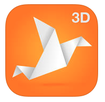
How to Make Origami
This app provides step-by-step instruction along with 3-D animation. Over 80 free patterns to download ranging from simple to complicated. By the way, origami develops logical reasoning, attention span, spatial thinking and fine motor skills. https://itunes.apple.com/ca/app/how-to-make-origami/id472936700?mt
This app provides step-by-step instruction along with 3-D animation. Over 80 free patterns to download ranging from simple to complicated. By the way, origami develops logical reasoning, attention span, spatial thinking and fine motor skills. https://itunes.apple.com/ca/app/how-to-make-origami/id472936700?mt
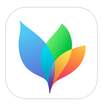
MindNode—Delightful Mind Mapping
Mind maps are visual representations of your ideas, starting with a central thought and growing from there. Perfect for brainstorming, planning, and organizing, this app allows you to share your thoughts in an intuitive way, so you can focus on the idea behind it. https://itunes.apple.com/us/app/mindnode/id312220102?mt=8
Mind maps are visual representations of your ideas, starting with a central thought and growing from there. Perfect for brainstorming, planning, and organizing, this app allows you to share your thoughts in an intuitive way, so you can focus on the idea behind it. https://itunes.apple.com/us/app/mindnode/id312220102?mt=8
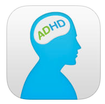
ADHD Treatment by Eytan Shleizer
Based on the current scientific literature, this app is designed to increase attention and control impulsivity. Note: this app claims to be a valid alternative to medication, but as yet, does not have research to support his.
http://www.adhd-app.com/
A link to the research behind this app: http://journals.plos.org/plosone/article?id=10.1371/journal.pone.0058546
Based on the current scientific literature, this app is designed to increase attention and control impulsivity. Note: this app claims to be a valid alternative to medication, but as yet, does not have research to support his.
http://www.adhd-app.com/
A link to the research behind this app: http://journals.plos.org/plosone/article?id=10.1371/journal.pone.0058546
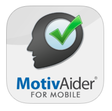
MotivAider for Mobile by Behavioural Dynamics Inc.
This app, originally invented by a clinical psychologist, is meant to help anyone change any behaviour. This app works in the background using a simple proven method to automatically facilitate behaviour change.
https://itunes.apple.com/ca/app/motivaider-for-mobile/id562217364?mt=8
This app, originally invented by a clinical psychologist, is meant to help anyone change any behaviour. This app works in the background using a simple proven method to automatically facilitate behaviour change.
https://itunes.apple.com/ca/app/motivaider-for-mobile/id562217364?mt=8
Links to Resources
Children and Adults with Attention Deficit/Hyperactivity Disorder (CHAD)
ADDitude: Strategies and Support for People with ADHD and LD
Attention Deficit Disorder Association
Art Therapy for Children with ADHD and Anxiety Disorders
Demonstration Video (Screencast) of the App Mind-Node
Center for ADHD Awareness Canada
LD Online: The educators' guide to learning disabilities and ADHD
ADDitude: Strategies and Support for People with ADHD and LD
Attention Deficit Disorder Association
Art Therapy for Children with ADHD and Anxiety Disorders
Demonstration Video (Screencast) of the App Mind-Node
Center for ADHD Awareness Canada
LD Online: The educators' guide to learning disabilities and ADHD
Sources and Supporting Research
Teaching art to students diagnosed with ADHD: An analysis of teacher strategies
by Meneka Rosanna Thirukkumaran
ADHD, Creativity, & the Commercial Art Industry
by Justin Genovese
Th Coincidence of Attention Deficit Hyperactivity Disorder and Creativity (NRC G/T)
by Bonnie Cramond
New Evidence That ADHD Might Enhance Creativity
by Brian Hutchinson
Learning, Arts, and the Brain (The Dana Consortium Report on Arts and Cognition)
Organized by Michael Gazzaniga
Mandalas in Art Therapy: A Therapeutic Tool To Help Children Focus
by Maribeth Goforth
Art-Based Program for Social and Emotional Development of Children
by Lenka Mynerikova
Art, imagination and teaching: researching the high school classroom
by Stuart Richmond (Canadian Journal of Education)
The contribution of art therapy to the social, emotional, and academic adjustment of children with learning disabilities
by Rita Freilich, PhD and Zipora Shechtman, PhD (The Arts in Psychotherapy, 2010)
Why We Need the Arts: John MacMurray on Education and the Emotions
(Educational Philosophy and Theory: Incorporating ACCESS, 2015)
